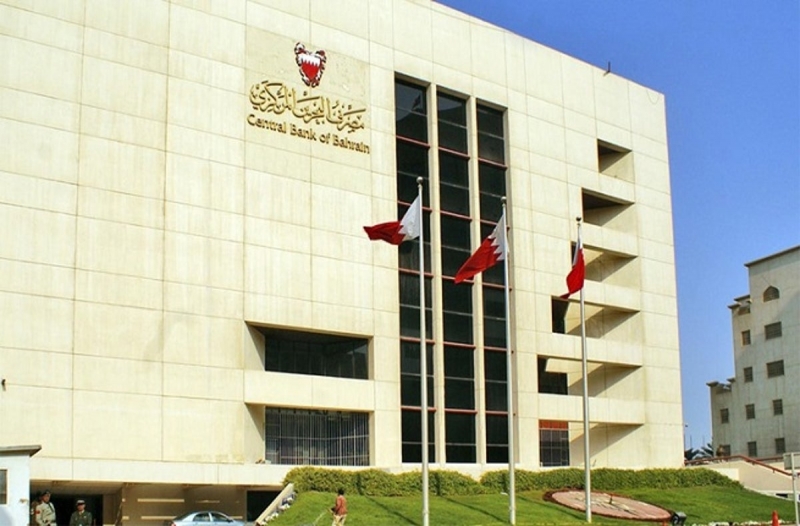CBB cuts key interest rates
TDT | Manama
Bahrain’s top bank yesterday trimmed its key policy interest rates yet again a day after the US Federal Reserve slashed its rates to near zero in a bid to ease the economic impact of the coronavirus (COVID-19) outbreak.
Tracking the US decision, the Central Bank of Bahrain (CBB), which has its dinars pegged to the US dollar, reduced its key policy interest rate on the one-week deposit facility from 1.75 per cent to 1.00pc.
The bank also cut its overnight deposit rate from 1.50pc to 0.75pc, one-month deposit rate from 2.20pc to 1.45pc, and lending rate from 2.45pc to 1.70pc. Following the move, also third this month, CBB said the effort is “to ensure monetary and financial stability, as well as the smooth functioning of the money markets and economic activity in Bahrain.”
The top bank further clarified that it’s ready to take further action if required and is closely monitoring the developments in the global and local markets.
Gulf banks trim rates
Most Gulf central banks tend to follow the US Fed because their currencies are pegged to the US dollar. Abu Dhabi, launched a slate of economic measures aimed at shielding the private sector from a slowdown, which has hit vital sectors of the UAE economy such as tourism and aviation. Kuwait’s central bank cut its deposit rate by 100 bps to 1.5pc, its lowest ever.
It also cut its overnight, one-week and onemonth repo rates by 100 bps to 1pc, 1.25pc, and 1.75pc respectively. The UAE central bank trimmed its interest rate on one-week certificates of deposit by 75 basis points and other rates by 50 bps.
The Saudi Arabian Monetary Authority cut repo and reverse repo rates by 75 bps. The Qatari regulator slashed its deposits, lending, and repo rates. The cuts follow stimulus packages launched by the Saudi, Qatari and UAE central banks over the past few days worth a combined $60 billion to contain the impact of the virus.
Abu Dhabi allocated 1 billion dirhams ($272.26 million) to support the local stock market, it said yesterday. Some further 3 billion dirhams were allocated for a credit guarantee scheme for small and medium-sized enterprises (SMEs) and another 5 billion dirhams to subsidise utility bills.
This follows the announcement of a $27-billion federal stimulus package by the UAE central bank, and Dubai earmarking 1.5 billion dirhams for vital sectors.
Several fees were scrapped or reduced, including for real estate registrations, or for start-ups and the tourism and hospitality sectors, the government said on Twitter.
Abu Dhabi Crown Prince Sheikh Mohammed bin Zayed al-Nahyan (MbZ) said on Twitter UAE authorities would support the economy by easing investment laws and regulations.
He said there would be no interruptions on approved capital expenditure and development projects in the emirate. In Saudi Arabia, which has closed malls and public eateries, the central bank has announced a 50-billion riyal ($13.32-billion) package to help small and medium-sized enterprises cope. Qatar announced $20.5 billion of financial incentives on Sunday.
US Fed’s second cut
The latest rate cut was theUS Fed’s second emergency rate cut in less than two weeks, lowering the benchmark borrowing rate to a range of 0-0.25pc, where it was during the 2008 global financial crisis, and pledged to keep it there “until it is confident that the economy has weathered recent events.”
The central bank also announced massive asset purchases, opened its discount-lending windows to banks, making it easier for them to borrow from the Fed and urging them to use it to help businesses and households.
It also removed bank reserve requirements to allow them to use cash backstops to meet unexpected funding needs. The Fed joined forces with other major central banks to guarantee the global financial system has enough cash to continue to operate.
“What’s happened with the Fed is phenomenal news,” President Donald Trump said at a regular briefing of his coronavirus task force. “I can tell you, I’m very happy.” Even with these moves, Powell told reporters “the second quarter will be a weak quarter with probably output declining a bit.” But “after that it becomes hard to say,” and “it’s going to depend again on the path of the virus,” Powell said in a call with reporters following the emergency meeting of the Fed’s policy-setting Federal Open Market Committee.
In joint action coordinated with the European Central Bank, Bank of England, Bank of Japan, Bank of Canada and the Swiss National Bank, the central banks moved to counteract global “dollar funding pressures,” Powell said.
“The swap lines are available standing facilities and serve as an important liquidity backstop to ease strains in global funding markets,” a joint statement from the central banks said.
Powell said the Fed still has some firepower left if the uncertainty is prolonged, but financial markets seemed uncertain: Wall Street plunged in futures trading, with the Dow Jones Industrial Average “mini” index losing more than 1,000 points or 4.5 percent, and the S&P 500 and Nasdaq posting similar declines.
Releases cash buffer
In the wake of the global financial crisis, the bank regulators, including the Fed, required lending institutions to build up a large cash buffer in case of another emergency, so they would not require a government bailout.
The Fed decision on Sunday unleashed those reserves so bank can help support families and businesses, with more than $4 trillion at their disposal, and encouraged banks to make use of low-cost short-term loans from the central bank “This action eliminates reserve requirements for thousands of depository institutions and will help to support lending to households and businesses,” the Fed said.
The Fed also revived the “quantitative easing” policy used during the last crisis that involves buying debt to keep money flowing through the economy. The Fed will in coming months buy $500 billion in US Treasury debt and $200 billion in mortgage-backed securities.
Related Posts

